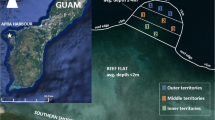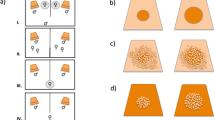Synopsis
This investigation was carried out at two study sites to examine the influence of shelter availability, nest site quality and male body size on spawning success of malePadogobius martensi. At Stirone Stream (first study site) individuals were not randomly distributed with respect to usable stones; larger males and females were consistently found to occupy larger stones. Laboratory experiments showed that the bottom surface area of the shelter was the relevant cue for the choice. The number of nesting males settled in a given area increased with increasing availability of local stone cover; inter-nest distance was directly correlated with male size. At Rivarolo Stream (second study site), which was characterized by lower nest density and a greater shortage of large stones, the pattern of shelter occupation was similar. These results suggest the presence of competition among individuals for the possession of larger-sized shelter sites. At both sites, the number of eggs in the nest increased as stone size increased; however, at the first study site, male body size played a major role in male spawning success as it concerns both the numbers of females mated and the number of eggs, while at the second study site, male body size was not shown to influence male spawning success. Factors responsible for between-site differences in male spawning success are discussed.
Similar content being viewed by others
References cited
Hanson A.C. 1966. Édouard Manet, 1832–1883. Philadelphia Museum of Art, Philadelphia 207 pp Bisazza, A., A. Marconato & G. Marin. 1989. Male competition and female choice inPadogobius martensi (Pisces, Gobiidae). Anim. Behav. 38: 406–413.
Black, R. 1971. Hatching success in the three-spined stickleback (Gasterosteus aculeatus) in relation to changes in behaviour during the parental phase. Anim. Behav. 19: 532–541.
Boer, B.A. de 1981. Influence of population density on the territorial, courting and spawning behaviour of maleChromis cyanea (Pomacentridae). Behaviour 77: 99–120.
Bolger, T. & P.L. Connolly. 1989. The selection of suitable indices for the measurement and analysis of fish condition. J. Fish Biol. 34: 171–182.
Breitburg, D.L. 1987. Interspecific competition and the abundance of nest sites: factors affecting sexual selection. Ecology 68: 1844–1855.
Brown, L. 1981. Patterns of female choice in mottled sculpins (Cottidae, Teleostei). Anim. Behav. 29: 375–382.
Brown, L. & J.F. Downhower. 1982a. Polygamy in the mottled sculpin (Cottus bairdi) of southwestern Montana (Pisces: Cottidae). Can. J. Zool. 60: 1973–1980.
Brown, L. & J.F. Downhower, 1982b. Constraints on female choice in the mottled sculpin. pp. 39–54.In: S.K. Wasser (ed.) Social Behavior of Female Vertebrates, Academic Press, New York.
Clark, P.J. & F.C. Evans. 1954. Distance to nearest neighbor as a measure of spatial relationships in populations. Ecology 35: 445–453.
Cole, K.S. 1982. Male reproductive behaviour and spawning success in a temperate zone goby,Coryphopterus nicholsi. Can. J. Zool. 60: 2309–2316.
Cole, K.S. 1984. Social spacing in the temperate marine gobyCoryphopterus nicholsi. Mar. Biol. 80: 307–314.
Cte, I.M. & W. Hunte. 1989. Male and female mate choice in the redlip blenny: why bigger is better. Anim. Behav. 38: 78–88.
De Martini, E.E. 1987. Paternal defence, cannibalism and polygamy: factors influencing the reproductive success of painted greenling (Pisces, Hexagrammidae). Anim. Behav. 35: 1145–1158.
Downhower, J.F. & L. Brown. 1980. Mate preferences of female mottled sculpins,Cottus bairdi. Anim. Behav. 28: 728–734.
Emlen, S.T. & L.W. Oring. 1977. Ecology, sexual selection, and the evolution of mating systems. Science 197: 215–223.
Freeman, M.C., D. Viñolas, G.D. Grossman & A. De Sostoa. 1990. Microhabitat use byBlennius fluviatilis in the Rio Matarraña. Freshwater Biology 24: 335–345.
Gandolfi, G. & P. Tongiorgi. 1974. Taxonomic position, distribution and biology of the gobies present in the Italian freshwaters,Padogobius martensi (Günther) andGobius nigricans Canestrini (Osteichthyes, Gobiidae). Ann. Mus. civico Stor. nat., Genova 80: 92–113.
Hastings, P.S. 1988. Correlates of male reproductive success in the browncheek blenny,Acanthemblemaria crockeri (Blennioidea: Chenopsidae). Behav. Ecol. Sociobiol. 22: 95–102.
Henderson, D.L. & D.A. Chiszar. 1977. Analysis of aggressive behaviour in the bluegill sunfishLepomis macrochirus Rafinesque: effects of sex and size. Anim. Behav. 25: 122–130.
Itzkowitz, M. 1977. Interrelationships of dominance and territorial behaviour in the pupfish,Cyprinodon variegatus. Behav. Proc. 2: 383–391.
Jakobsson, S., T. Radësater & T. Jarvi. 1979. On the fighting behaviour ofNannacara anomala (Pisces, Cichhdae) ♂♂. Z. Tierpsychol. 49: 210–220.
Kodric-Brown, A. 1978. Establishment and defence of breeding territories in a pupfish (Cyprinodontidae:Cyprinodon). Anim. Behav. 26: 818–834.
Kodric-Brown, A. 1983. Determinants of male reproductive success in pupfish (Cyprinodon pecosensis). Anim. Behav. 31: 128–137.
Kodric-Brown, A. 1988. Effect of population density, size of habitat and oviposition substrate on the breeding system of pupfish (Cyprinodon pecosensis). Ethology 77: 28–43.
Lindström, K. 1988. Male-male competition for nest sites in the sand goby,Pomatoschistus minutus. Oikos 53: 67–73.
Loiselle, P.V. & G. Barlow. 1978. Do fishes lek like birds? pp. 31–75.In: E.S. Reese & F.J. Lighter (ed.) Contrasts in Behavior: Adaptations in the Aquatic and Terrestrial Environments, Wiley & Sons, New York.
Magnhagen, C. & L. Kvarnemo. 1989. Big is better: the importance of size for reproductive success in malePomatoschistus minutus (Pallas) (Pisces, Gobiidae). J. Fish Biol. 35: 755–763.
Marconato, A. & A. Bisazza. 1989. Correlates of male reproductive success inPadogobius martensi (Gobiidae). J. Fish. Biol. 34: 889–899.
Miller, P.J. 1984. Tokology of gobies. pp. 119–153.In: G.W. Potts & R.J. Wootton (ed.) Fish Reproduction, Academic Press, London.
Moss, B. 1988. Ecology of freshwaters. Man and medium. Blackwell, Oxford. 417 pp.
Partridge, L. & J.A. Endler. 1987. pp 265–277.In: J.W. Bradbury & M.B. Andersson (ed.) Sexual Selection: Testing the Alternatives, J. Wiley & Sons, Chichester.
Parmigiani, S., P. Torricelli & M. Lugli. 1988. Intermale aggression inPadogobius martensi (Günther) (Pisces: Gobiidae) during the breeding season: effect of size, prior residence, and parental investment. Monit. zool. ital. 22: 161–170 Petersen, C.V. 1988. Male mating success, sexual size dimorphism, and site fidelity in two species ofMalacoctenus (Labrisomidae). Env. Biol. Fish. 21: 173–183.
Scott, D. & J.M. Rushforth. 1959. Cover on river bottom. Nature 183: 836–837.
Siegel, S. 1956. Non-parametric statistics for the behavioral sciences. Mc Graw-Hill, New York. XVII + 312 pp.
Sokal, R.R. & F.J. Rohlf. 1981. Biometry. W.H. Freeman and Company, New York. 859 pp.
Thompson, S. 1986. Male spawning success and female choice in the mottled triplefin,Forsterygion varium (Pisces: Tripterygiidae). Anim. Behav. 34: 580–589.
Torricelli, P., M. Lugh & G. Gandolfi. 1985. A quantitative analysis of the fanning activity in the malePadogobius martensi (Pisces, Gobiidae). Behav. 92: 288–301.
Torricelli, P., S. Parmigiani, M. Lugh & G. Gandolfi. 1988. Intermale aggression inPadogobius martensi (Günther) (Pisces, Gobiidae): effect of size and prior residence. Monit. zool. ital. 22: 121–131.
Trivers, R.L. 1972. Parental investment and sexual selection. pp. 136–179.In: B. Campbell (ed.) Sexual Selection and the Descent of Man, Aldine, Chicago.
Wazlavek, B.E. & M.H. Figler. 1989. Territorial prior residence, size asymmetry, and escalation of aggression in convict cichlids (Cichlasoma nigrofasciatum Günther). Aggr. Behav. 15: 235–244.
Author information
Authors and Affiliations
Rights and permissions
About this article
Cite this article
Lugli, M., Bobbio, L., Torricelli, P. et al. Breeding ecology and male spawning success in two hill-stream populations of the freshwater goby,Padogobius martensi . Environ Biol Fish 35, 37–48 (1992). https://doi.org/10.1007/BF00001156
Received:
Accepted:
Issue Date:
DOI: https://doi.org/10.1007/BF00001156




